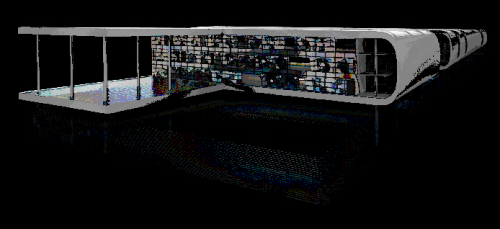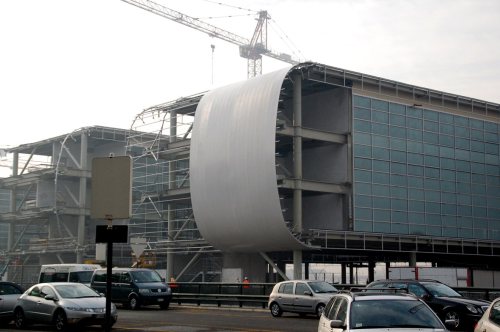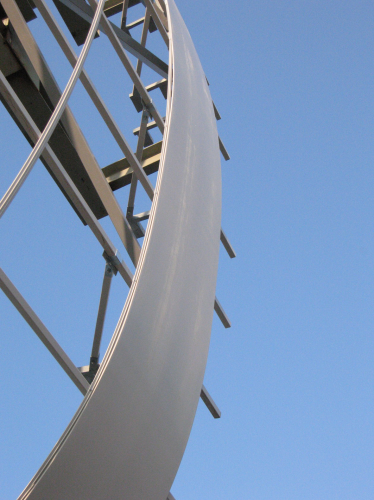


The Sheraton Hotel at Malpensa Airport, Milan, Italy, is scheduled to open in July 2010. The building was designed by King Roselli Architetti of Rome, and constructed by Gruppo Degennaro, Bari, at a cost of approximately €67 million.
The hotel design is highly contemporary as are the technologies and materials selected for its construction.
The overall structure is 450 m wide and 14 m high. The building has three floors which house offices, around 420 rooms and other facilities, and a Conference Centre.
“This hotel concept is based on the idea of a large folding skin wrapping the modules containing the rooms," explains architect Riccardo Roselli. "All the installations are hidden beneath the cover and are able to breathe through various apertures. Overall, the structure is more like a design object than a building.”
A key feature of the design is the overall shape. This was achieved by applying an outer skin made from a glass fibre reinforced composite. The composite panels were produced in Italy by Progettazione Costruzione Ricerca (P.C.R. Srl) using a pultrusion process. The skin has a quartz finish, made with P.C.R.’s Qflex™ technology and it is water-repellent. The outer surface is clad in a white-grey film.
King Roselli selected glass fibre composite for the application after comparison with other cladding materials, liquid membranes and polycarbonate.
“Whilst some of these materials were suitable for thermoforming, they offered limited bonding solutions, and did not meet all performance requirements," reports Roselli. "Sprayed liquid membranes made covering the whole building possible, however, the building was simply too large for this solution to work successfully.”
In addition to its light weight, the composite material has excellent mechanical properties compared to metal. It also offers corrosion resistance as well as electrical and thermal insulation. The composite panels were produced in strips of 20 m long and 1 m wide. These are extremely lightweight and can easily be handled on the construction site.
“Overall, the cost of the installed cladding is competitively priced," concludes Roselli. "I am sure this material has great potential.”
Glass fibre from 3B, located in Battice, Belgium, was used in the pultruded composite panels.
“Increasingly, non-corrosive fibreglass is used in metal replacement applications such as these, where they bring a number of key benefits," says Hugues Jacquemin, CEO of 3B. "These include greater design freedom and lighter weight. Architects and designers looking for innovative solutions can use our materials to create stunning and durable surfaces in a wide range of shapes, whilst installers value the lighter weight, which facilitates faster – and easier – installation.”
Copyright © 2010 Elsevier Ltd. All rights reserved.






